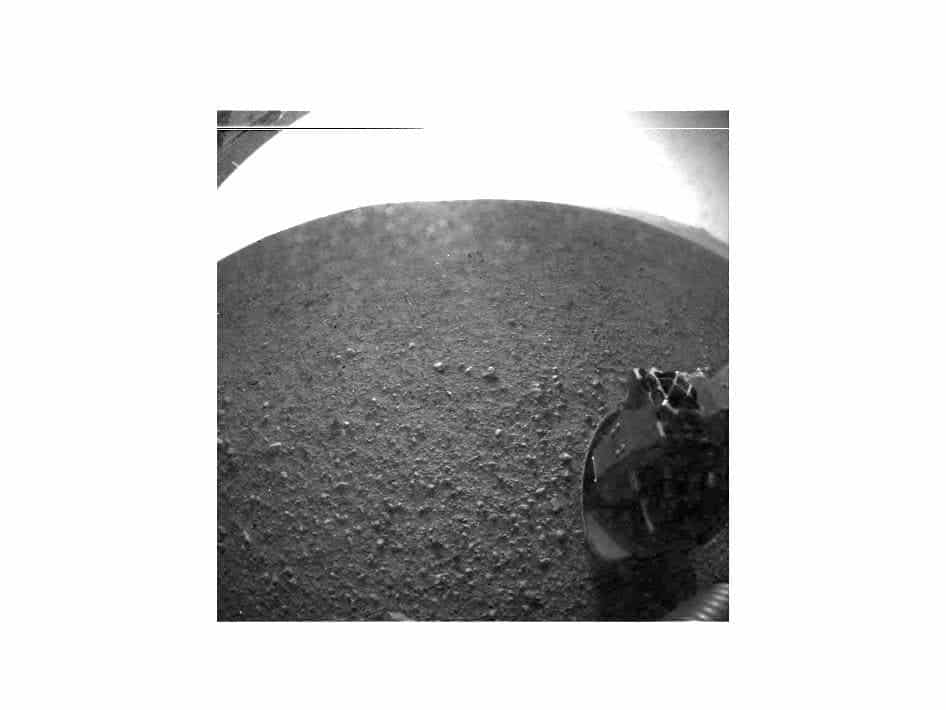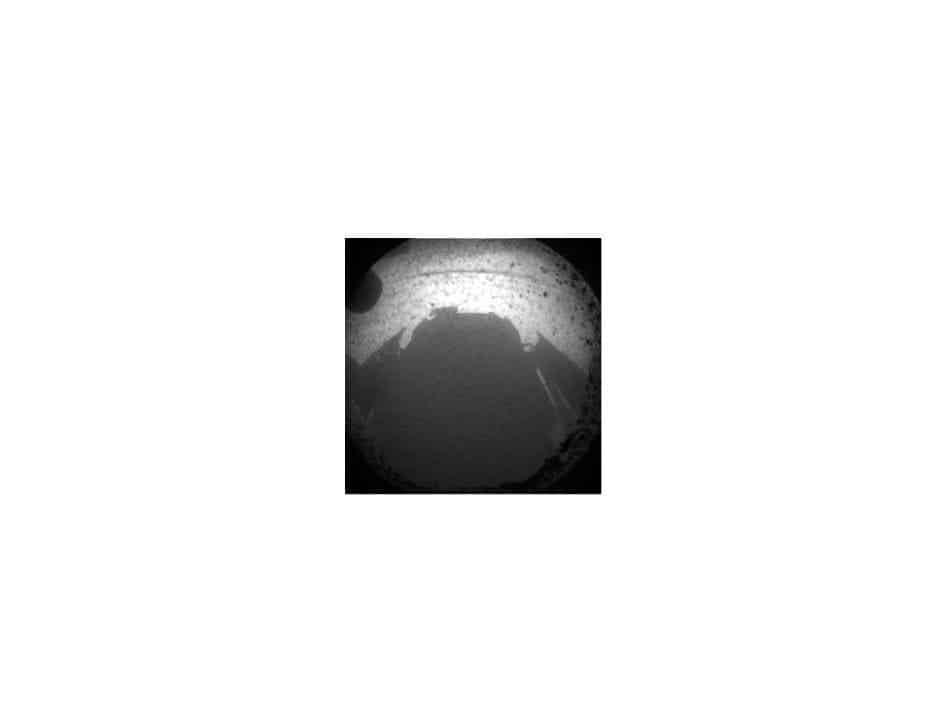Yes, Curiosity has landed! And like we’ve reported earlier, right after the rover landed on the martian surface, it beamed back its first images to Earth to confirm the successful touchdown. The images took 14 minutes to reach scientists at the Jet Propulsion Laboratory in California, where the whole Mars rover operation is being coordinated.
The first one is a black-and-white, 512 by 512 pixel image, taken by Curiosity’s rear-left Hazcam.

“Curiosity’s landing site is beginning to come into focus,” said John Grotzinger, project manager of NASA’s Mars Science Laboratory mission, at the California Institute of Technology in Pasadena. “In the image, we are looking to the northwest. What you see on the horizon is the rim of Gale Crater. In the foreground, you can see a gravel field. The question is, where does this gravel come from? It is the first of what will be many scientific questions to come from our new home on Mars.” Image credit (c) NASA
HazCams’ wide-angle “fisheye” lens, appeared grainy and dark due to a circle of dust specks, kicked up from Curiosity’s dramatic landing, on the cameras’ clear protective covers.
[MORE] Read about Curiosity – its equipment and mission on Mars

This is one of the first images taken by NASA’s Curiosity rover, which landed on Mars the evening of Aug. 5 PDT (morning of Aug. 6 EDT). The camera is the left eye of a stereo pair positioned at the middle of the rover’s front side. The clear dust cover on the camera is still on in this view, and dust can be seen around its edge, along with three cover fasteners. The rover’s shadow is visible in the foreground. As planned, the rover’s early engineering images are lower resolution. Larger color images are expected later in the week when the rover’s mast, carrying high-resolution cameras, is deployed. Image credit (c) NASA









